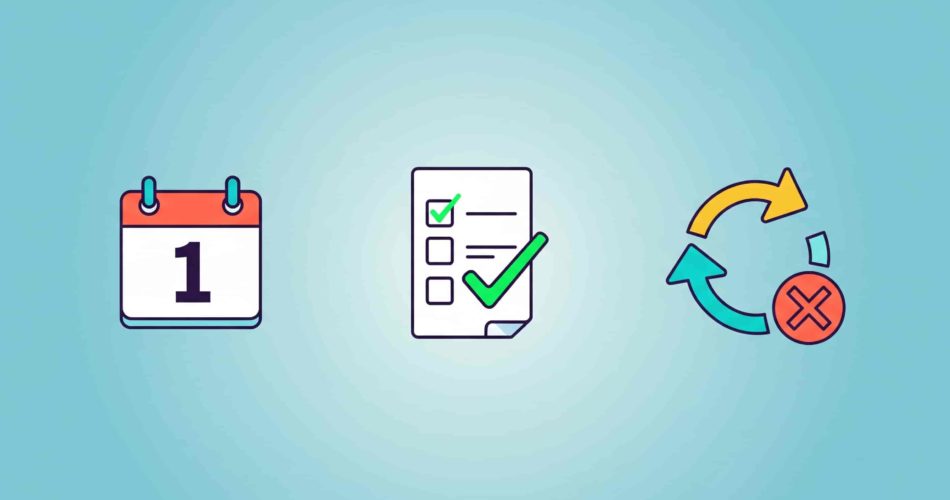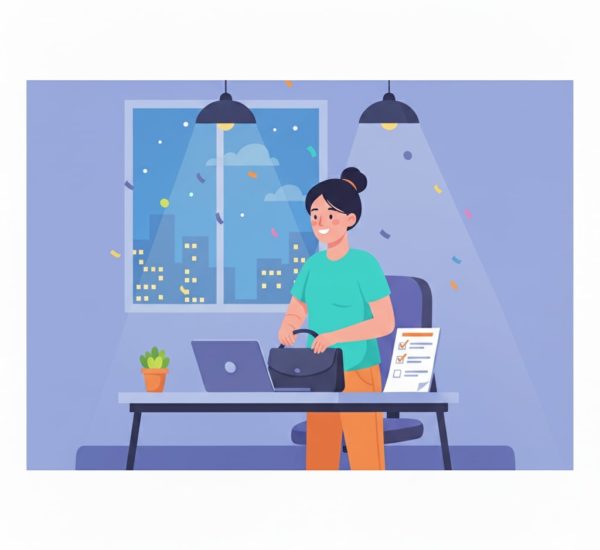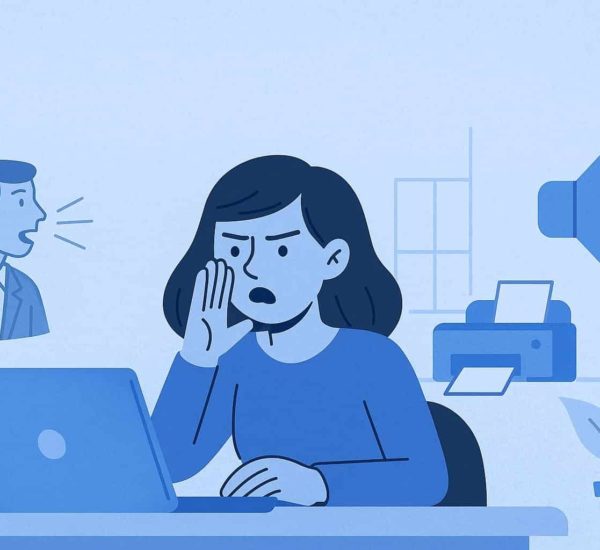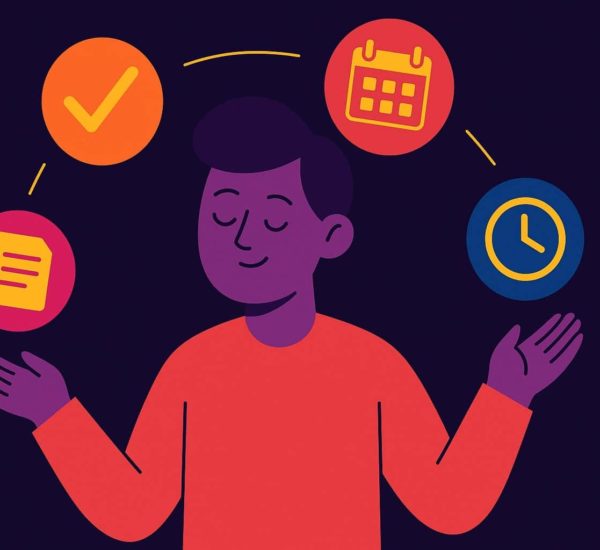Ever find yourself opening the same email three times before finally replying? Or leaving a half-written report untouched until the deadline breathes down your neck? You’re not alone. Task revisiting is one of the biggest silent productivity killers at work. That’s where the one-touch rule comes in—a simple yet powerful productivity rule of thumb that helps you reduce rework, make faster decisions, and keep your mental load light.
The idea is straightforward: touch it once, deal with it, and move on. It sounds deceptively simple, but applying it consistently can transform how you handle your day-to-day workload. Let’s break down how the one-touch rule works, why it’s so effective, and how you can stick to it without burning out.
Why You Keep Reopening the Same Task
And why it’s draining more time and energy than you think
You probably don’t even notice when it happens: you open a Slack message, skim it, think “I’ll deal with this later,” and move on. Or you start filling out a form or reviewing a request, then something else grabs your attention, and the original task is left half-done. A few hours later, you’re back at it… trying to remember where you left off.
This kind of stop-start behavior is more common than we realize—and it’s one of the biggest ways we waste time at work.
Rework Happens When We Don’t Finish Things the First Time
Every time you revisit the same task, you’re doing more than repeating a click. You’re rebooting your brain. You have to re-read, re-process, and re-decide what to do next. That rework adds up across the day. Whether it’s small admin tasks or larger projects, you end up doing more thinking and less finishing.
The One-Touch Rule Helps You Break That Cycle
The one-touch rule is a simple way to work smarter: if you open it, act on it. If you start it, finish it. If you can’t do it right away, don’t “kind of” start—schedule it instead. That’s it. No fancy apps required.
It’s a practical productivity rule of thumb that helps you reduce rework, protect your focus, and close the loop on tasks without having to revisit them three times.
And the best part? It works just as well for digital tasks as it does for paperwork or small requests from your team. The more you use it, the less clutter you carry around in your head—and the more space you create to get real work done.
How to Start Using the One-Touch Rule
Practical ways to finish what you start—and stop circling back
If you’re constantly jumping between tasks, you’re not alone. Research by the American Psychological Association shows that task switching can reduce productivity by up to 40%—a direct cost of mental rework every time we revisit something we already started.
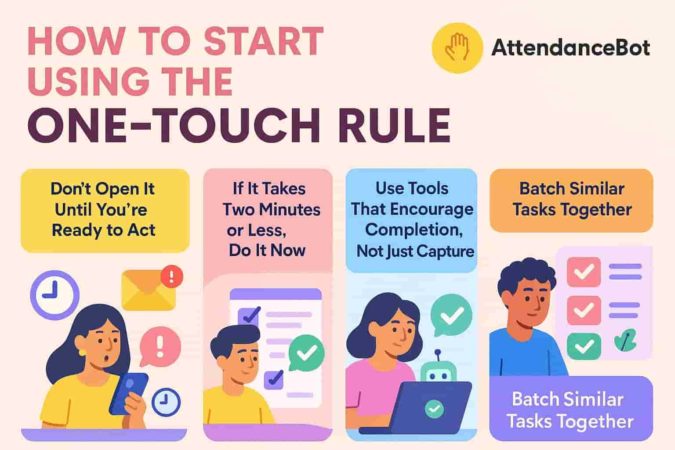
The one-touch rule helps you avoid that cost. But to use it consistently, you need more than good intentions. You need small changes to how you approach work in the moment. Here’s how to make it stick:
1. Don’t Open It Until You’re Ready to Act
It’s tempting to preview emails or click into tasks “just to see what they are.” But that primes your brain to start processing without finishing, which is exactly what the one-touch rule is meant to prevent.
Instead, treat every click like a commitment: if you’re not ready to reply, update, approve, or complete it, don’t open it yet. Snooze it, flag it, or schedule it.
According to a study by RescueTime, people check email or communication tools every six minutes on average. But they often don’t act on what they read, creating mental clutter.
2. If It Takes Two Minutes or Less, Do It Now
This tip overlaps with David Allen’s Getting Things Done method—and it pairs perfectly with the one-touch rule. If you can complete a task in two minutes or less (like approving a request, replying to a message, or logging an update), just do it.
You’ll reduce the number of tasks hanging over your head and avoid turning quick wins into repeat interruptions.
3. Use Tools That Encourage Completion, Not Just Capture
To stick with one-touch behavior, your workflow tools should make it easy to close the loop. That might mean setting up reminders, batching similar tasks, or using Slack bots like AttendanceBot to automate approvals and notifications, so you don’t leave items open-ended.
When you reduce the number of clicks, tabs, and mental bookmarks needed to finish something, the one-touch rule becomes second nature.
4. Batch Similar Tasks Together
One of the reasons we fall into the rework trap is constant context switching. Grouping similar tasks—like responding to all time-off requests, reviewing updates, or clearing Slack DMs—reduces the cognitive load that comes with jumping between different types of work. This makes it easier to complete things in one go and maintain flow.
A study by the University of California, Irvine, found that it takes an average of 23 minutes and 15 seconds to regain focus after a distraction or switch in tasks. Task batching helps minimize those switches, giving the one-touch rule more room to work.
5. Build In a “Close the Loop” Moment Before You Sign Off
Before ending your day, take five minutes to scan for any loose ends—messages half-read, requests half-handled, tabs still open. This quick ritual helps you spot anything you touched but didn’t finish, giving you a chance to either close it out or schedule it properly for tomorrow.
It’s a small habit, but it trains your brain to stay aware of task completion and reduces the mental clutter that lingers overnight.
When the One-Touch Rule Doesn’t Apply
Knowing when not to use it is part of making it work
While the one-touch rule is powerful, it’s not meant to be a rigid system. In some cases, trying to complete a task immediately can actually hurt your focus or decision quality.
Here are a few moments where it’s okay to break the rule:
Tasks That Require Deep Thinking
If something needs creative problem-solving, research, or emotional processing (like writing a difficult feedback email or evaluating a policy change), don’t force it. Instead of rushing through it, capture it, block time for it, and come back with intention. One-touch shouldn’t mean one-rush.
Waiting on Others
If your task depends on someone else’s input—an approval, a final number, or missing context—it’s smarter to pause. Mark it with a clear “waiting on” tag or set a Slack reminder so it doesn’t slip through.
Tasks That Benefit From Stepping Away
Sometimes a little time makes work better. Stepping away briefly can help with clarity, especially if emotions or uncertainty are involved. Just make sure to close the loop by scheduling a specific time to return.
💡 Tip: The key is being intentional. If you’re choosing to delay something for a good reason (not out of distraction), you’re still practicing one-touch thinking—because you’ve decided what to do with the task instead of leaving it hanging.
Applying the One-Touch Rule in Remote Work
How to stay focused when work is happening everywhere
In a remote-first team, context switching can happen every few minutes between Slack threads, project tools, calendars, and doc comments. That’s why building one-touch habits is even more valuable in this kind of environment.
Here’s how to make it work in your everyday workflow:
Be Clear About Task Ownership in Slack
When tasks or asks come through Slack, they often get acknowledged but not acted on. Try replying with a quick “On it—will reply by EOD,” or better yet, use message reminders or Slack integrations like AttendanceBot to trigger follow-ups or log actions immediately.
Research shows that the average Slack user sends or receives over 200 messages per day. Without structure, that’s a lot of half-finished tasks floating around.
Batch Messages, Then One-Touch Them
Set time blocks for Slack or email rather than staying in reactive mode. Once inside your communication tools, commit to finishing the loop on each message—reply, delegate, archive, or schedule. No circling back unless needed.
Use Workflow Tools That Help You Finish, Not Just Start
If your team uses Notion, Asana, Trello, or similar, make sure your setup doesn’t just capture ideas—it nudges people to finish. For example, consider automation rules, checklists, or assigning due dates that move tasks forward after the first touch.
Your One-Touch Starter Checklist
Building the one-touch rule into your workflow doesn’t mean changing everything overnight. It’s about making small, intentional shifts that help you stop revisiting the same task twice.
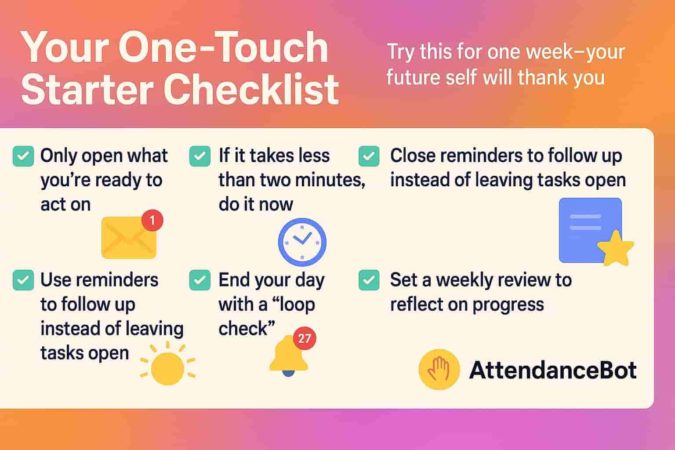
Here’s a simple checklist to help you try it out this week:
✅ Only open what you’re ready to act on
No peeking. No, “just checking.” Commit to finishing or scheduling.
✅ If it takes less than two minutes, do it now
Don’t let micro-tasks pile up—clear them in real time.
✅ Batch low-focus tasks (like approvals or replies)
Set aside two 15-minute blocks a day to process and finish admin work.
✅ Use reminders to follow up instead of leaving tasks open
Snooze messages in Slack or Gmail if you can’t finish them right away.
✅ Close the loop clearly
Write “Done,” mark as complete, or archive. Help your brain—and others—move on.
✅ End your day with a “loop check”
Spend five minutes scanning for any half-started work and either close or schedule it.
✅ Turn off unnecessary notifications
Mute noisy channels or set Slack to Do Not Disturb during focus time so you’re not pulled into half-responses all day.
✅ Create a “Later List” for anything that needs thought
If you know you can’t finish it now, don’t leave it floating—send it to your Notion, task manager, or calendar with a real-time block.
✅ Set a weekly review to reflect on progress
On Friday, ask: How many tasks did I revisit more than once? How can I simplify them next time?
✅ Celebrate what you didn’t reopen
Instead of just checking off completed items, notice when you finished something the first time. That’s the goal.
Final Takeaway: Touch It Once, Then Move On
The one-touch rule isn’t about speed—it’s about clarity. When you stop circling back to the same tasks, you free up time, energy, and headspace for work that actually matters. You make decisions faster. You reduce rework. And you build momentum instead of chasing it.
Start small. Try the checklist. Share it with your team. The more you close loops in real time, the less mental clutter you carry—and the easier it becomes to stay focused in a noisy, remote world.
Finish it once, and it won’t follow you around all day.
